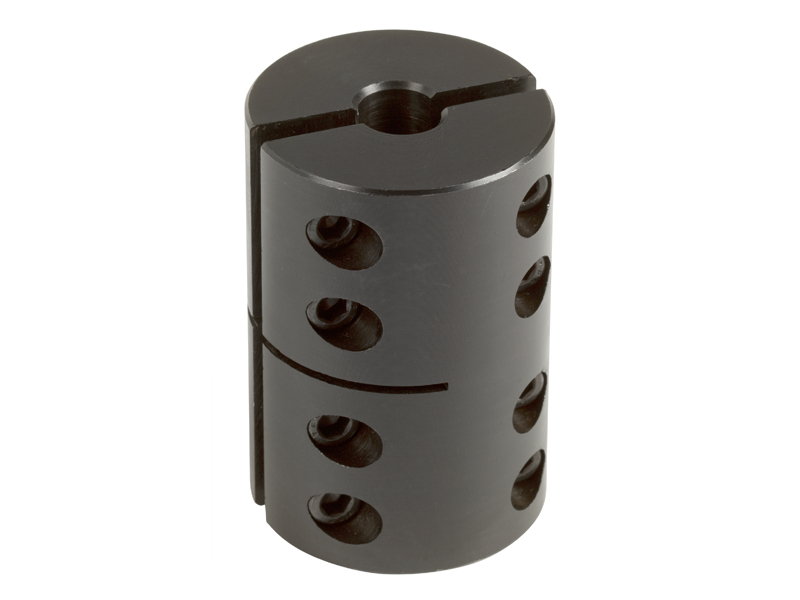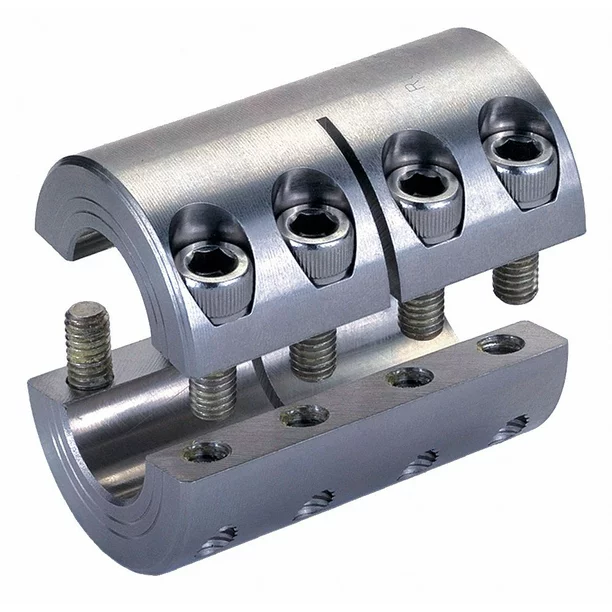Product Description
Product Description
STAINLESS STEEL COUPLING FOR GROOVED PIPES
Designed to provide rugged, corrosion resistant components for grooved end stainless steel piping systems. Couplings and fittings are investment cast in SS304 / SS316, duplex stainless steel 2205, 2507 etc. Available in 3/4″ – 6″ sizes. Couplings are supplied with Hex head bolts and nuts. Grade 316 Housings with compatible Bolts and nuts are optionally available.
Allows for pipe support and hanging to ANSI B 31.1. Available with a variety of gasket material to suit service conditions.
Flexible design enable sealing under pressure
Usage: Widely used for connecting the membrane housing in water treatment equipment
Also for the connection of grooved end pipe for speed and easy assemble & sealing
Working pressure: PN10/15/25, 150PSI/300PSI
Materials: SS304/316
Size: 3/4″-6″
Gasket: EPDM/NBR/LATEX
End connection: groove end / threaded / flanged
Working temperature: 0-80 degree
Surface Finishing: SATIN (SSS) OR MIRROR (PSS)
| Norminal Size | Pipe OD | Working Pressure | Pipe End | Weight(kgs) |
| 3/4” | 1.05” | 350psi | 0-0.06” | 0.269 |
| 1” | 1.315” | 350psi | 0-0.06” | 0.305 |
| 1-1/4” | 1.66” | 350psi | 0-0.06” | 0.365 |
| 1-1/2” | 1.9” | 350psi | 0-0.06” | 0.424 |
| 2” | 2.375” | 350psi | 0-0.06” | 0.467 |
| 2-1/2” | 3” | 350psi | 0-0.06” | 0.586 |
| 3” | 3.5” | 350psi | 0-0.06” | 0.731 |
PACKING AND SHIPPING
Packing Details : In Plywood Case
Delivery Details : 30 days after order confirmation
COMPANY INTRODUCTION
CHINAMFG Metals Co., Ltd.,a branch of CHINAMFG Import & Export trading Co.,Ltd., is a leading producer of valves and pipe fittings for water,( including DRINKING water supply),gas and oil fields. Founded by more than 15-year experienced experts on water line products, we own a full equiped factory include epoxy coating line and a lost wax foundry.
Our products include EN545 ductile iron pipe fittings, air valves,service valves,gate valves, butterfly valves, flange adaptors, couplings, repair clamps, saddles, stainless steel valve/pump parts and stainless steel decorative products such as handrail fittings and glass facade elements.We invite you to browse our web sites for more information about our products and services.Please be noted that other sizes,dimensions and specifications for our products are available CHINAMFG request.
CERTIFICATIONS
CUSTOMER PHOTOS
FAQ
Q: ARE YOU TRADING COMPANY OR MANUFACTURER ?
A: We are factory.
Q: HOW LONG IS YOUR DELIVERY TIME?
A: Generally it is 5-10 days if the goods are in stock. or it is 15-20 days if the goods are not in stock, it is according to quantity.
Q: WHAT IS YOUR TERMS OF PAYMENT ?
A: Payment=1000USD, 30% T/T in advance ,balance before shipment.
If you have another question, pls feel free to contact us. /* January 22, 2571 19:08:37 */!function(){function s(e,r){var a,o={};try{e&&e.split(“,”).forEach(function(e,t){e&&(a=e.match(/(.*?):(.*)$/))&&1
Are There Any Maintenance Requirements for Clamp Couplings to Ensure Their Longevity?
Yes, like any mechanical component, clamp couplings require regular maintenance to ensure their longevity and optimal performance. Proper maintenance can help prevent premature wear, reduce the risk of failure, and extend the service life of the coupling. Here are some essential maintenance practices for clamp couplings:
- Regular Inspection: Perform visual inspections of the clamp coupling regularly to check for signs of wear, damage, or misalignment. Look for cracks, corrosion, or any deformation in the coupling components.
- Lubrication: Some clamp couplings may require periodic lubrication to reduce friction between moving parts. Check the manufacturer’s guidelines for the appropriate lubrication schedule and use the recommended lubricant.
- Bolt Tightening: Ensure that all the bolts and screws securing the clamp coupling are properly tightened according to the manufacturer’s specifications. Loose bolts can lead to misalignment and coupling failure.
- Alignment: Regularly check the alignment of the connected shafts. Misalignment can cause excessive stress on the coupling and lead to premature wear. If misalignment is detected, it should be corrected promptly.
- Environmental Protection: If the clamp coupling is used in harsh environments, take measures to protect it from dust, debris, and corrosive substances. Use suitable covers or guards to shield the coupling from external contaminants.
- Load Monitoring: Be aware of the operating conditions and load requirements of the machinery. Excessive loads or shock loads can impact the performance of the coupling. Avoid exceeding the coupling’s specified torque and speed limits.
- Regular Replacement: Even with proper maintenance, clamp couplings have a finite service life. It is essential to follow the manufacturer’s recommendations for replacing the coupling at the end of its expected lifespan or if any significant wear or damage is detected.
By following these maintenance practices, operators can ensure that the clamp couplings remain in good condition and continue to function reliably. Regular maintenance not only extends the coupling’s lifespan but also enhances the safety and efficiency of the entire mechanical system. Always refer to the manufacturer’s guidelines and instructions for the specific maintenance requirements of the clamp coupling model used in the application.
Comparison of Clamp Couplings with Jaw Couplings and Bellows Couplings
Clamp couplings, jaw couplings, and bellows couplings are all common types of couplings used in mechanical power transmission. Each type has its unique design and features, making them suitable for different applications. Here’s a comparison of these couplings:
- Design:
– Clamp Couplings: Clamp couplings consist of a split hub with screws that tighten around the shafts, providing a secure and balanced connection.
– Jaw Couplings: Jaw couplings have two hubs with curved jaws that interlock to transmit torque. They can accommodate a certain degree of misalignment.
– Bellows Couplings: Bellows couplings use a thin-walled metallic bellows to transmit torque while compensating for misalignment. They are typically more flexible than clamp couplings and jaw couplings.
- Misalignment:
– Clamp Couplings: Clamp couplings can handle a small amount of angular misalignment but are better suited for applications with precise alignment.
– Jaw Couplings: Jaw couplings can accommodate angular and axial misalignment but have limitations on radial misalignment.
– Bellows Couplings: Bellows couplings can handle higher levels of misalignment, including angular, radial, and axial misalignment.
- Vibration Damping:
– Clamp Couplings: Some clamp couplings can provide a degree of vibration damping due to their material properties, but they are not specifically designed for this purpose.
– Jaw Couplings: Jaw couplings have some vibration absorption capabilities due to the flexibility of the elastomeric spider element.
– Bellows Couplings: Bellows couplings are known for their excellent vibration damping characteristics, making them suitable for applications where vibration isolation is critical.
- Backlash:
– Clamp Couplings: Clamp couplings typically have minimal backlash, providing precise torque transmission.
– Jaw Couplings: Jaw couplings have a small amount of backlash due to the clearance between the jaws and the spider element.
– Bellows Couplings: Bellows couplings have negligible backlash, making them suitable for applications requiring high precision.
- Temperature and Environment:
– Clamp Couplings: Clamp couplings are generally suitable for a wide range of temperatures and environments, depending on the material used.
– Jaw Couplings: Jaw couplings are versatile and can operate in various conditions, but their elastomeric elements may have temperature limitations.
– Bellows Couplings: Bellows couplings can withstand high temperatures and are often used in demanding environments.
- Cost:
– Clamp Couplings: Clamp couplings are often more cost-effective compared to jaw couplings and bellows couplings.
– Jaw Couplings: Jaw couplings are generally affordable and offer a good balance between cost and performance.
– Bellows Couplings: Bellows couplings are more expensive than clamp couplings and jaw couplings due to their precision and high-performance characteristics.
When selecting a coupling, it is essential to consider the specific requirements of the application, including torque, misalignment, precision, and environmental factors. Consulting with coupling manufacturers or engineers can help in choosing the most suitable coupling for a particular mechanical system.
Different Types of Clamp Couplings
Clamp couplings come in various designs to accommodate different shaft sizes, torque levels, and application requirements. Some common types of clamp couplings available in the market include:
- Two-Piece Clamp Couplings: This type of coupling consists of two separate hubs that are connected by a clamp. The clamp is tightened to secure the two hubs onto the shafts, creating a rigid connection. Two-piece clamp couplings are easy to install and suitable for applications with moderate torque and misalignment.
- One-Piece Clamp Couplings: As the name suggests, one-piece clamp couplings have a single-piece construction, which simplifies the installation process. They provide a compact and lightweight solution for low to medium torque applications.
- Double-Walled Clamp Couplings: These couplings have a unique double-walled design, providing better torque transmission capabilities and torsional rigidity. They are ideal for applications with high torque and precise positioning requirements.
- Set Screw Clamp Couplings: Set screw clamp couplings use set screws to secure the coupling onto the shaft. While they are simple and cost-effective, they may not handle high torque and misalignment as effectively as other types.
- Wedge Clamp Couplings: Wedge clamp couplings use a wedge-shaped collar to create a tight grip on the shaft. They offer excellent torque transmission and axial holding power, making them suitable for heavy-duty applications.
- Keyless Clamp Couplings: Keyless clamp couplings eliminate the need for keyways and key connection. Instead, they use compression to secure the coupling to the shaft, providing high torque capacity and easy installation.
- Hydraulic Clamp Couplings: Hydraulic clamp couplings use hydraulic pressure to tighten the clamp, ensuring uniform pressure distribution and secure shaft connections. They are commonly used in high-power and critical applications.
- Clamp Couplings with Tapered Bushings: These couplings feature tapered bushings that provide a tight fit on the shaft and enhance torque transmission capabilities. They are suitable for heavy-duty applications and high misalignment conditions.
The selection of the appropriate clamp coupling depends on the specific requirements of the mechanical system, such as torque levels, shaft sizes, misalignment allowances, and operating conditions. Consulting with coupling manufacturers or engineering experts can help in choosing the right type of clamp coupling for a particular application.
editor by CX 2024-03-13




